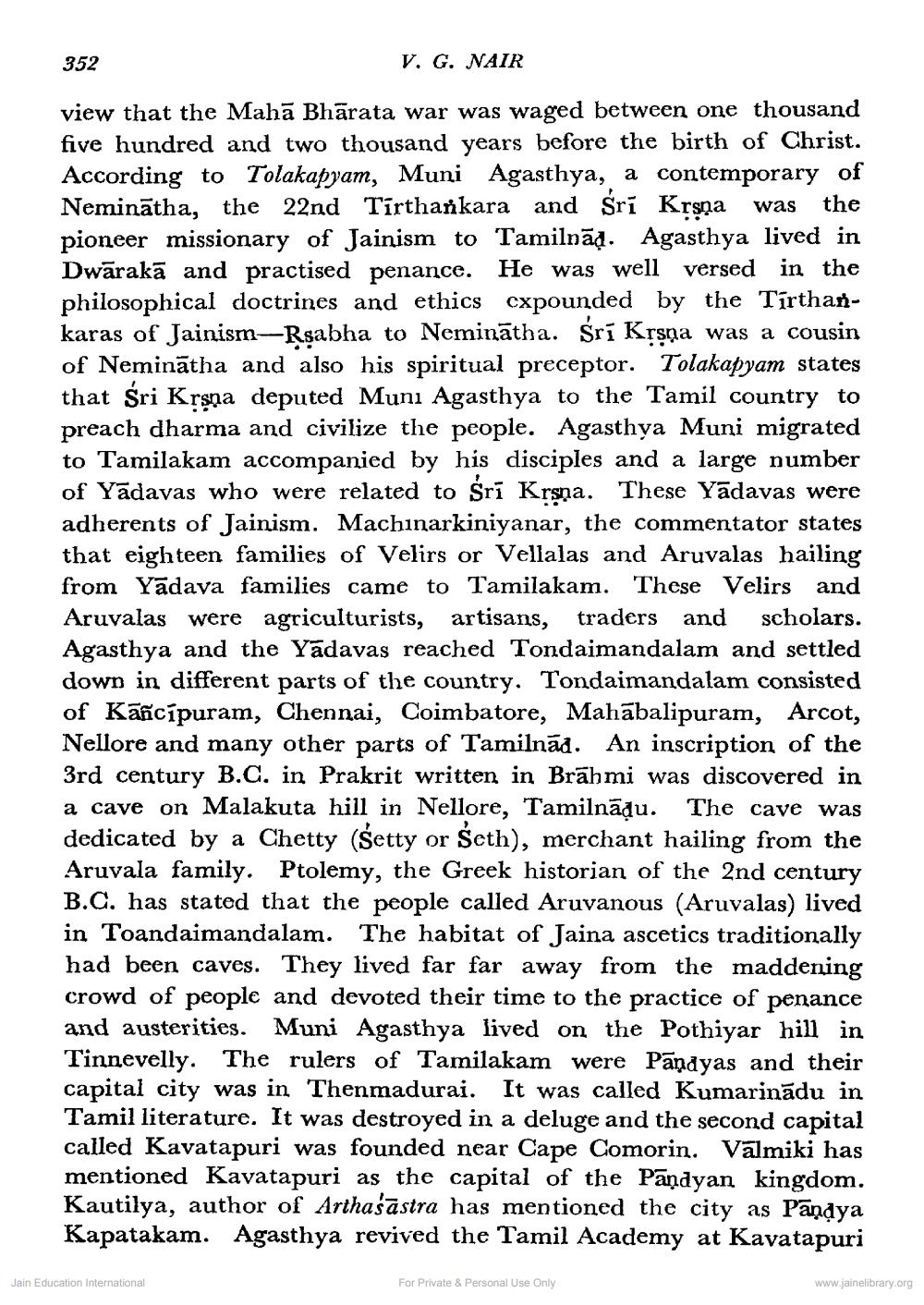________________
352
V. G. NAIR
view that the Mahā Bhārata war was waged between one thousand five hundred and two thousand years before the birth of Christ. According to Tolakapyam, Muni Agasthya, a contemporary of Neminātha, the 22nd Tirthankara and Sri Krsna was the pioneer missionary of Jainism to Tamilnād. Agasthya lived in Dwārakā and practised penance. He was well versed in the philosophical doctrines and ethics cxpounded by the Tirthankaras of Jainism-Rşabha to Neminātha. Śrī Krşņa was a cousin of Neminātha and also his spiritual preceptor. Tolakapyam states that Sri Krşņa deputed Muni Agasthya to the Tamil country to preach dharma and civilize the people. Agasthya Muni migrated to Tamilakam accompanied by his disciples and a large number of Yadavas who were related to Sri Krsņa. These Yādavas were adherents of Jainism. Machinarkiniyanar, the commentator states that eighteen families of Velirs or Vellalas and Aruvalas hailing from Yādava families came to Tamilakam. These Velirs and Aruvalas were agriculturists, artisans, traders and scholars. Agasthya and the Yādavas reached Tondaimandalam and settled down in different parts of the country. Tondaimandalam consisted of Kāñcípuram, Chennai, Coimbatore, Mahābalipuram, Arcot, Nellore and many other parts of Tamilnās. An inscription of the 3rd century B.C. in Prakrit written in Brāhmi was discovered in a cave on Malakuta hill in Nellore, Tamilnāļu. The cave was dedicated by a Chetty (Šetty or Seth), merchant hailing from the Aruvala family. Ptolemy, the Greek historian of the 2nd century B.C. has stated that the people called Aruvanous (Aruvalas) lived in Toandaimandalam. The habitat of Jaina ascetics traditionally had been caves. They lived far far away from the maddening crowd of people and devoted their time to the practice of penance and austerities. Muni Agasthya lived on the Pothiyar hill in Tinnevelly. The rulers of Tamilakam were Pāņdyas and their capital city was in. Thenmadurai. It was called Kumarinādu in Tamil literature. It was destroyed in a deluge and the second capital called Kavatapuri was founded near Cape Comorin. Vālmiki has mentioned Kavatapuri as the capital of the Pandyan kingdom. Kautilya, author of Arthaśāstra has mentioned the city as Pandya Kapatakam. Agasthya revived the Tamil Academy at Kavatapuri
Jain Education International
For Private & Personal Use Only
www.jainelibrary.org




